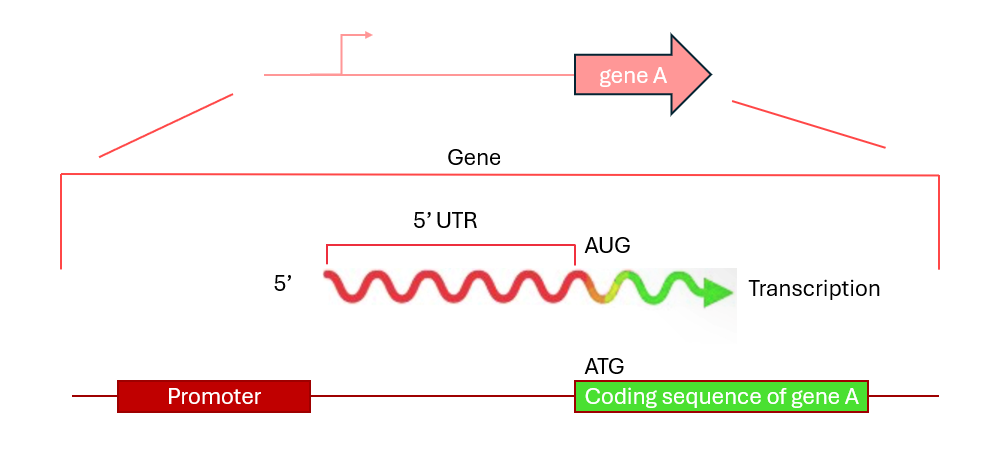(noun. /aw-per-on/)
by Hannah Walsh
What does it mean?
An operon is a group of genes in bacteria that work together and are controlled by the same promoter. A promoter is a region of DNA where the process of transcription starts. Operons can be monocistronic, meaning they have one gene, or polycistronic meaning they have more genes.
How do I use it in a sentence?
“The polycistronic rpoZ operon in E. coli controls four genes all by the same promoter to make proteins needed for stress response, DNA repair, and other important functions”

Schematic of a monocistronic operon and related terms. Operons are not just any cluster of genes, but a specific functional unit designed for efficient gene expression. They are tightly controlled and are not always as straightforward as just “on” or “off”. The promoter (red box) is where RNA polymerase binds to begin transcription. The transcription process copies the coding sequence (green box) into mRNA. The 5′ untranslated region (5′ UTR) is at the start of the gene and is a target spot for regulation. Once transcription starts, the coding sequence is copied into mRNA. In the coding sequence, the start codon (ATG for DNA or AUG for RNA) signals the beginning of the protein-building process. Image generated by author using PowerPoint.
Etymology
Borrowed from both French opéron, meaning “to bring about, effect” and Late Latin operārī “to work, be efficacious”). Taken together, operon means a working unit of genes that cause an effect on the cell as a whole.
